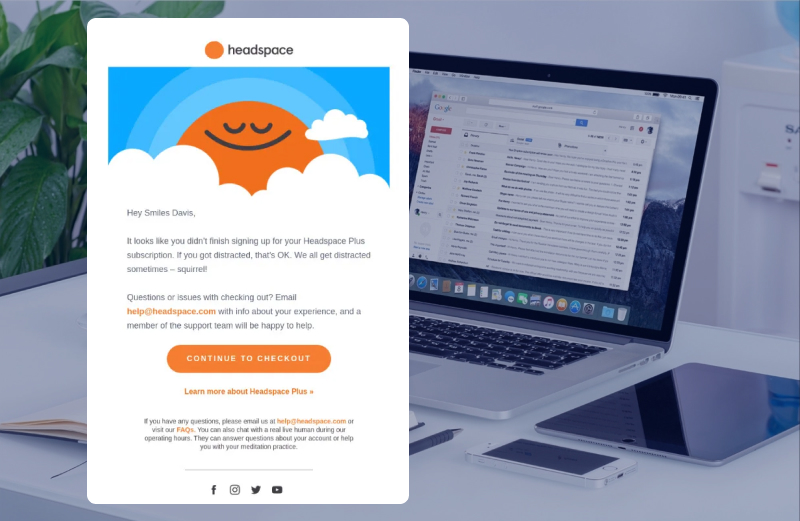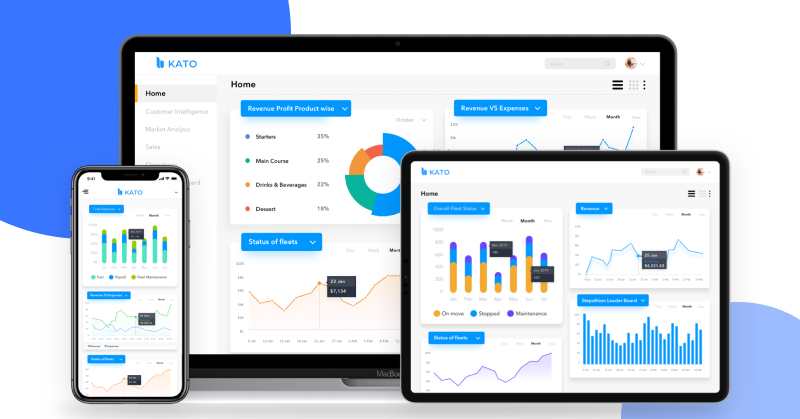Having a strong online presence is no longer optional – it’s essential!
Did you know 93% of online experiences begin with a search engine? That means if people can’t find you online, they can’t learn about your business, products, or services.
But don’t worry, building a strong online presence doesn’t have to be complicated. In this blog post, we’ll break down everything you need to know, from crafting a user-friendly website to engaging with your audience on social media.
We’ll share tips from digital marketing pros to help build a strong online brand presence and attract more customers than ever before!
Your Website – The Heart of Your Online Presence
Your website is like your digital storefront – people can learn about you, your brand, and what you offer. Here are some key things to consider to make your website the heart of your strong online presence:
Website Design That Works
- First Impressions Count
People decide in seconds if they like your website. Think clean, modern design with clear menus and high-quality visuals. A bakery might have warm colors, delicious-looking photos of their pastries, and a simple menu for easy browsing.
- Mobile First
Most people browse the web on their phones. Make sure your website looks great and functions smoothly on all devices, especially smartphones. Can someone find your contact information easily on their phone?
What Should Be On Your Website? Think of your website as your online brochure with these must-haves:
- Clear contact information: Make it easy for people to reach you, whether by email, phone, or a contact form.
- Easy way to buy: If you have an online store, ensure a smooth and secure checkout process. For service-based businesses, have clear call-to-action buttons like “Book Now” or “Get a Quote.”
- Easy-to-navigate menus: People should find what they’re looking for quickly. Think of clear categories and subcategories.
Content That Makes People Care
Your website content is what keeps people engaged and coming back for more. Here’s what you need to know:
- Good Content for Happy Reading
Fill your website with valuable and exciting content for your target audience. Think blog posts, articles, videos, or eye-catching pictures. A local yoga studio might have a blog with beginner-friendly yoga poses, interviews with local instructors, or beautiful photos of their calming studio space.
- Write Like You Talk
Don’t use fancy words or jargon that people don’t understand. Keep your website content friendly, informative, and easy to read. Imagine you’re explaining your business to a friend over coffee.

SEO – The Secret to Being Found Online
Ever wondered how some websites magically appear at the top of search results when you type something into Google? That’s the power of SEO! Here’s a breakdown to help you increase online presence for businesses:
- What is SEO?
In simple terms, SEO stands for Search Engine Optimization. It’s all about making your website more friendly to search engines like Google. This helps your website appear higher in search results when people search for keywords related to your business.
- Keywords – What are they?
Keywords are the words and phrases people type into search engines. Imagine a bakery owner. Their target keywords might be “best chocolate chip cookies near me” or “custom cakes [city name].” There are free and paid tools to help you research relevant keywords for your business.
Social media and marketing services can help businesses reach new customers and build strong relationships online.
Social Media – Where People Hang Out
Social media is like the digital town square – it’s where people connect, share ideas, and discover new things. It’s a fantastic tool to grow your online brand presence and connect with your target audience.
But with so many platforms out there, it can be overwhelming! Let’s break it down:
The Right Platforms For You
Find Your People
Before diving in, consider where your ideal customers spend their time online. Are they young and trendy, scrolling through Instagram? Maybe they’re professionals networking on LinkedIn. Understanding your target audience helps you choose the right platforms to focus on.
Some popular social media platforms are Instagram, Facebook, and TikTok.
Making a Social Media Plan
Don’t just post randomly! Having a plan helps you stay consistent and achieve your goals. Here are some tips:
- Set Goals: What do you want to achieve with social media? Increase brand awareness, drive traffic to your website, or boost sales?
- Create a Posting Schedule: Decide how often you’ll post on each platform and stick to it. Consistency is key for keeping your audience engaged.
- Content Calendar: Plan your content. This ensures a good mix of posts, from informative to fun and engaging.
Now that you have a plan, let’s talk about creating content that gets people talking!
Content That Gets People Talking
- A Posting Schedule
There’s no magic number, but consistency is key. Aim for a few weekly posts on each platform, adjusting based on your audience and content type.
- Eye-Catching Visuals
People are drawn to visuals, so high-quality photos and videos are essential. Even a simple phone camera can capture great content – think of close-up shots of your products, happy customers enjoying your services, or behind-the-scenes glimpses into your business.
- Building a Community
Social media isn’t just about broadcasting messages – it’s about creating a conversation. Respond to comments and messages promptly, ask questions, and encourage interaction. Run contests or polls to get people involved.
For example, a yoga studio runs a “Pose of the Week” contest, encouraging followers to share photos of themselves doing their favorite yoga poses.
- Social Media Advertising
Want to reach an even wider audience? Paid advertising on social media platforms allows you to target your ideal customers with a laser focus. You can set budgets and choose demographics like age, location, and interests to ensure the right people see your ads.
Want to see how a company dramatically boosted its online visibility? Check out this case study on amplifying digital presence and learn how they achieved impressive results.
Building a Community – Keep Them Coming Back
Having a strong online presence isn’t just about attracting new people – it’s about keeping them engaged and returning for more. Here are some ways to build a loyal community around your brand:
Email Marketing
Email is a powerful tool for nurturing relationships with your audience. Here’s how to use it effectively:

- Building a List
How do you get people to sign up for your emails? Offer valuable incentives like exclusive discounts, early access to new products, or insider tips. Promote your email signup form on your social media profiles and website.
- Writing Great Emails
Keep your emails concise, informative, and visually appealing. Offer valuable content, like special promotions, helpful tips related to your industry, or exclusive content not available elsewhere.
- Targeting Your Emails
Not all customers are the same. Segment your email list based on purchase history and interest. This facilitates you to send more relevant emails that resonate with each subscriber.
For example, a sporting goods store might send targeted emails to soccer fans about upcoming sales on cleats while sending a different email to runners highlighting new running shoes.
Customer Relationship Management (CRM)
A CRM system is a software tool that manages customer interactions in one place. It’s like a digital filing cabinet for your customers!
- Knowing Your Customers
A CRM lets you store customer information such as contact details, purchase history, and preferences. This valuable data helps you better understand your customers and personalize your communication with them.
- Personalized Communication
With a CRM, you can tailor your marketing messages to individual customers. Imagine a local coffee shop using their CRM to send birthday greetings with a special discount offer or a clothing store recommending new arrivals based on a customer’s past purchases.
Knowing If You’re Making Progress
So, you’ve put in the effort to build a strong online presence – but how do you know if it’s working? Here’s how to track your progress and ensure you’re on the right track:
Web Analytics – Measuring Your Success
Web analytics are like a window into how people interact with your website. These tools track important metrics like website traffic, user behavior, and conversions.

Key Metrics: Here are some key website metrics to track:
- Traffic: How many people are visiting your website?
- Engagement: How long have people been staying on your website? Are they clicking on your links and exploring your content?
- Conversions: Are people taking the actions you want them to take on your website (e.g., signing up for newsletter, buying a product)?
Using Data to Improve
By analyzing your website data, you can identify areas that are working well and need improvement. This allows you to fine-tune your website and marketing efforts for better results. For example, if you see a lot of website traffic but low conversions, you might need to improve your website’s call-to-action buttons or make the checkout process smoother.
SMART Goals – Making Sure You’re On Track
Setting Goals: Clear and measurable goals are crucial for tracking your brand’s digital presence. Use the SMART goal framework to set effective goals:
- Specific: Be clear about what you want to achieve. Instead of “increase website traffic,” aim to “increase website traffic by 20% in the next 3 months.”
- Measurable: Define how you’ll measure your progress. This could be website traffic numbers, social media engagement metrics, or email signups.
- Attainable: Set goals that are ambitious but achievable.
- Relevant: Your goals must be relevant to your overall business objectives. Does increasing website traffic ultimately lead to more sales?
- Time-bound: Set a deadline to achieve your goals.
Tracking Progress: Monitor your progress toward your goals regularly. Most web analytics and social media platforms offer built-in reporting tools to help you track key metrics.
Adjusting Your Strategy: Don’t be afraid to adapt your strategy as needed. Based on your data, you might need to adjust your content marketing approach, refine your social media targeting, or tweak your website design.
Building a strong brand presence is crucial for success in today’s competitive market. Explore these effective strategies and learn how to make your brand stand out.
Wrapping It Up
You’ve explored the key tips for building a strong online presence. Please note that this is an ongoing journey. Still, by following these tips and consistently creating valuable content, you’ll be well on your way to attracting new customers and growing your online business.
Don’t forget online reputation management is also crucial.
Monitor what people say about your business online and promptly address negative feedback. When you deliver excellent customer service and engage with your audience, you’ll build trust and solidify your positive online presence.
